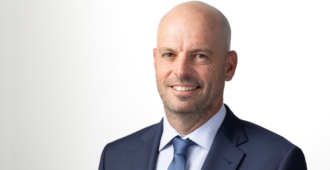
Australia has one of the highest rates of multiple myeloma (a blood cancer) in the world. People are also living longer after diagnosis. With both incidence and survival rising, the number of Australians living with multiple myeloma up to 30 years after initial diagnosis is expected to double by 2043.
A new study published in Leukemia Research, co-led by the Daffodil Centre (a research partnership between Cancer Council NSW and the University Sydney) and the University of Sydney School of Public Health using data from the Sax Institute’s 45 and Up Study, maps multiple myeloma care costs over time using linked health records. It shows how costs vary across diagnosis and when they are highest.
Key points
- $180,450: the extra (or ‘excess’) health system cost per person incurred by people with multiple myeloma from one year before diagnosis to five years after.
- Average extra costs are highest in the first year after diagnosis (about $66,000) and then remain high for at least five years (about $36,000–$43,000 each year).
- About 1 in 4 people (24%) had an autologous stem cell transplant – a treatment using a person’s own stem cells.
- People diagnosed at an older age tended to have lower average extra costs and were less likely to have an autologous stem cell transplant.
A growing health challenge
Multiple myeloma is a relatively uncommon blood cancer but one of the costliest to treat per person. As more Australians live with the disease in coming decades, understanding true health system costs helps governments and services plan for demand.
“Our findings highlight the substantial health system costs associated with multiple myeloma. These insights are important for future healthcare planning for people with the disease,” says joint first author Sarsha Yap (The Daffodil Centre, University of Sydney, and Cancer Council NSW).
How the research was done
Researchers analysed 520 people with multiple myeloma diagnosed between 2006 and 2019 in the 45 and Up Study, comparing their health system costs and autologous stem cell transplant use with 2,533 study participants without cancer. Costs covered hospitalisations, medical services, prescription medicines and emergency presentations and were calculated from two years before diagnosis to five years after.
What the study found
- Extra health system costs per person incurred by people with multiple myeloma jumped in the first year after diagnosis (about $66,000) and then remained high over time (about $36,000–$43,000 each year for years two to five).
- Across one year before diagnosis to five years after, the total extra cost was $180,450 per person.
- Within five years of diagnosis, 24% had an autologous stem cell transplant (using their own cells).
- Older age at diagnosis was linked with lower average extra costs and lower autologous stem cell transplant use.
About the 45 and Up Study
The Sax Institute’s 45 and Up Study is the largest ongoing study of health and ageing in Australia. It follows more than 250,000 people aged 45 and over to help answer important questions about health and healthcare.





